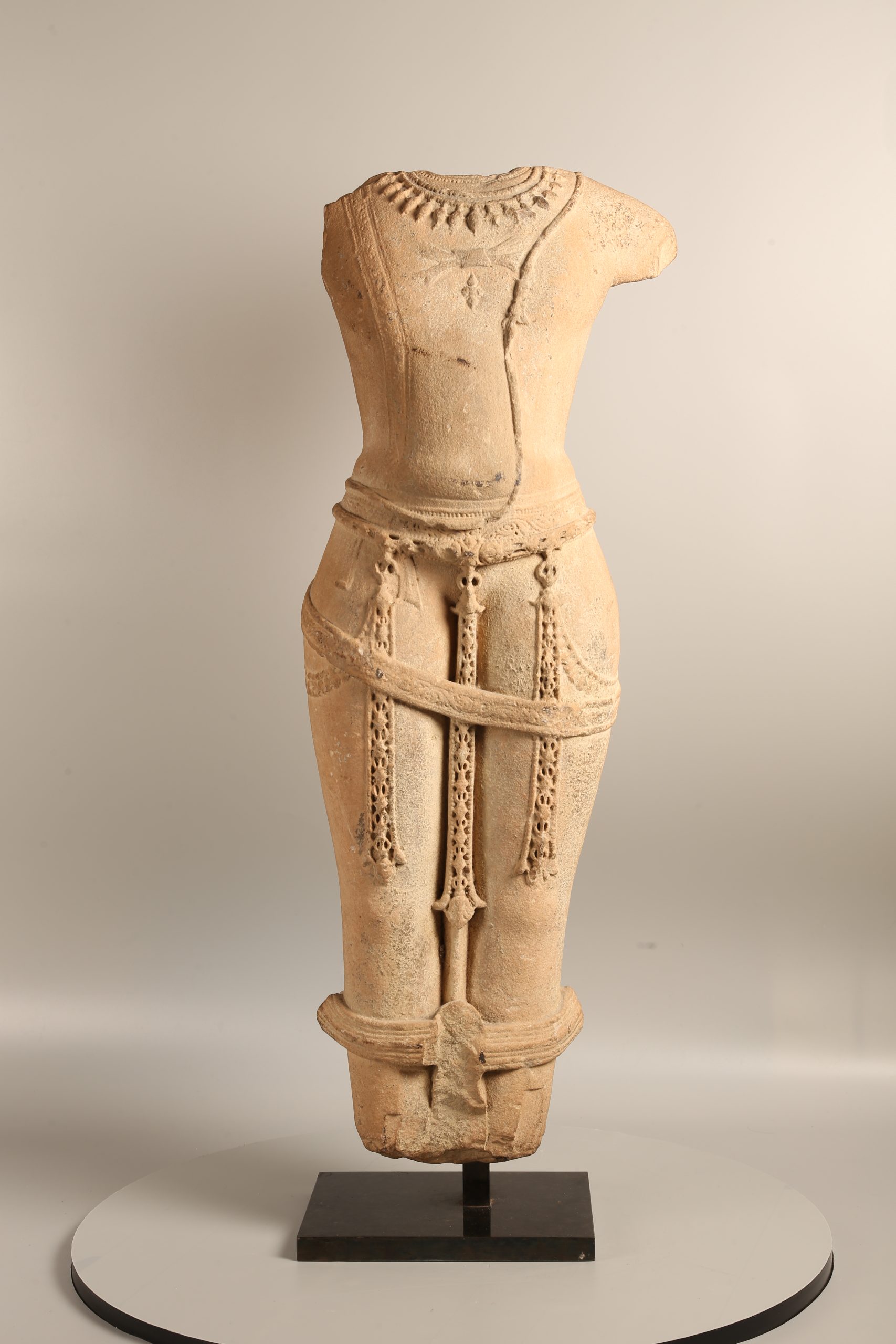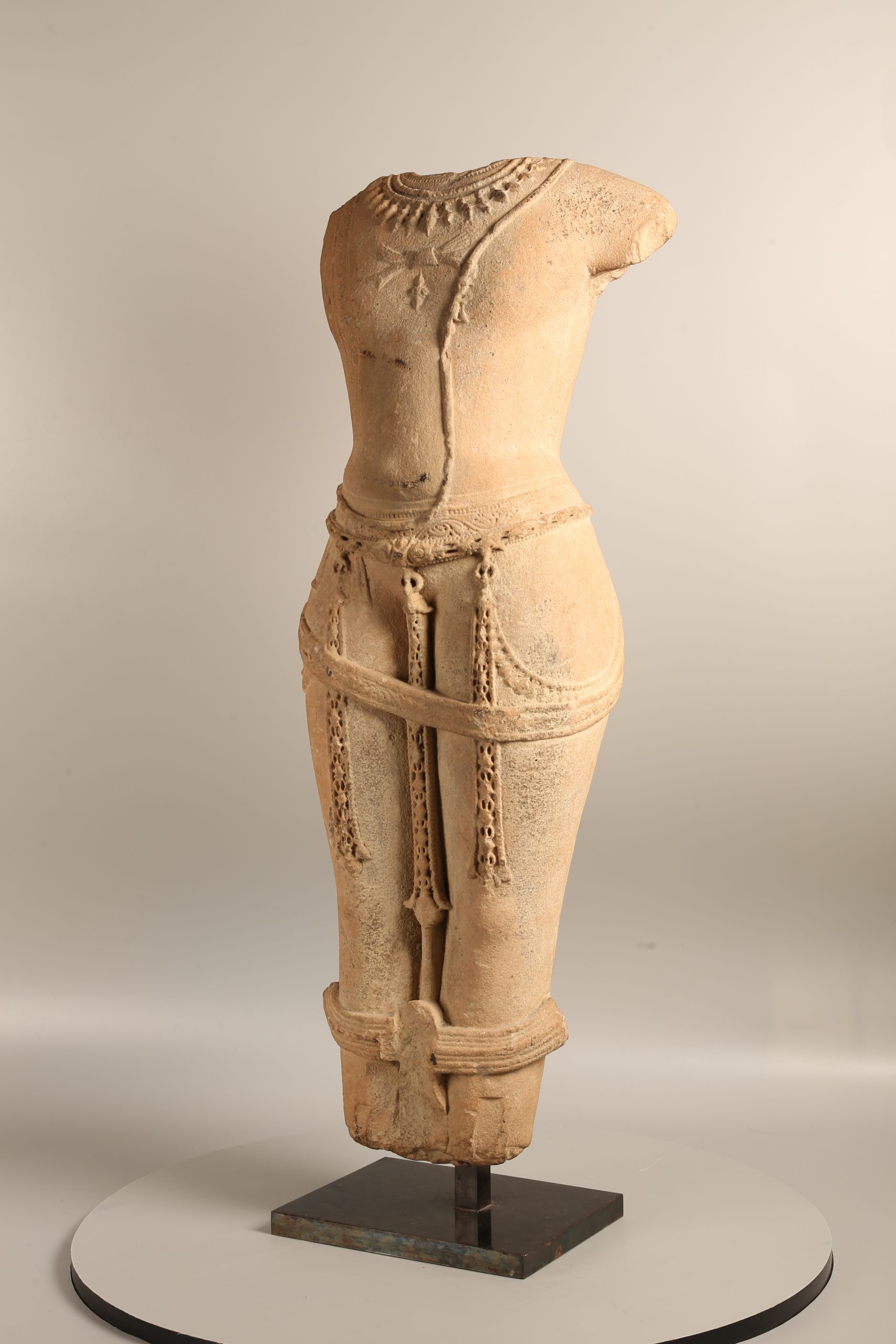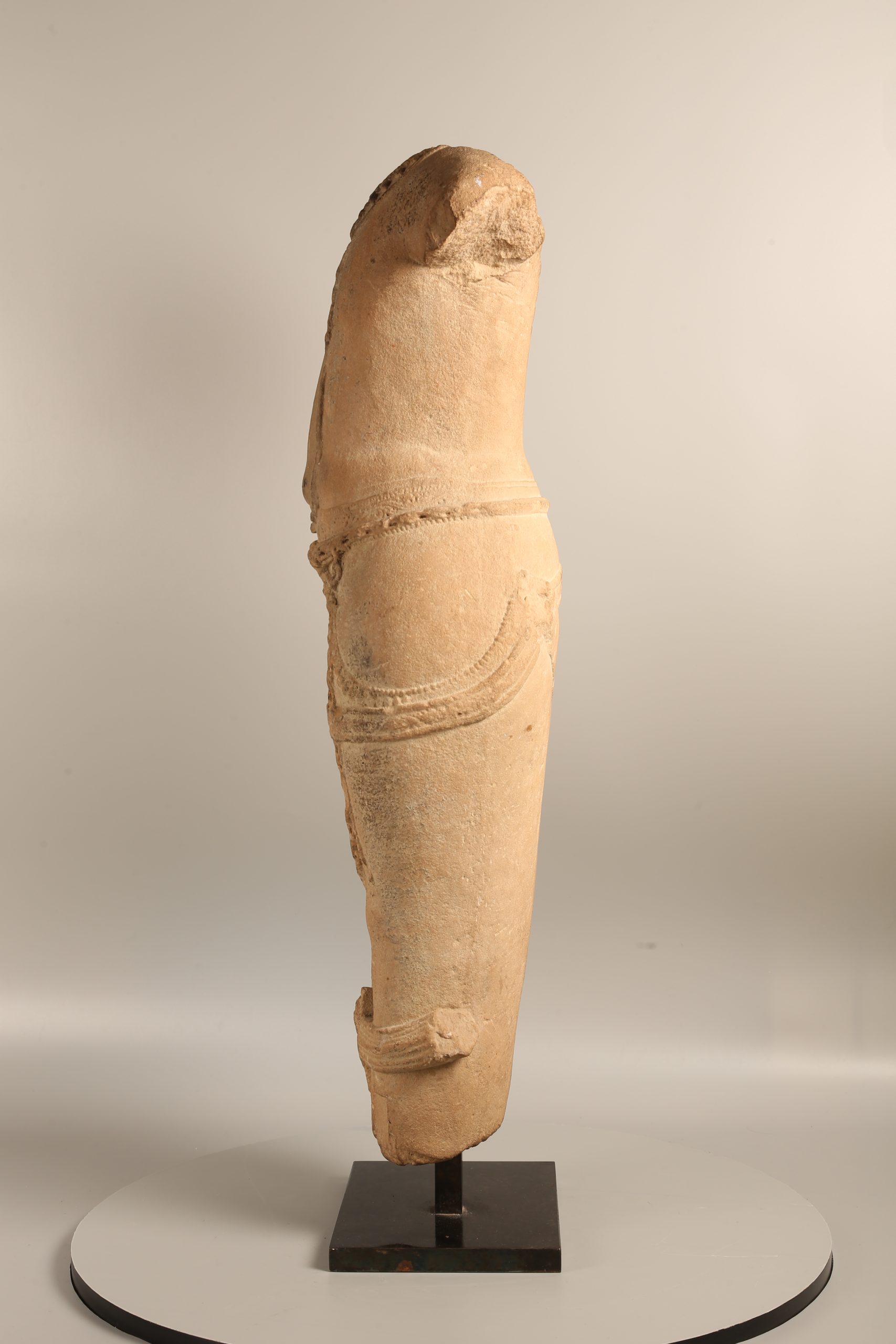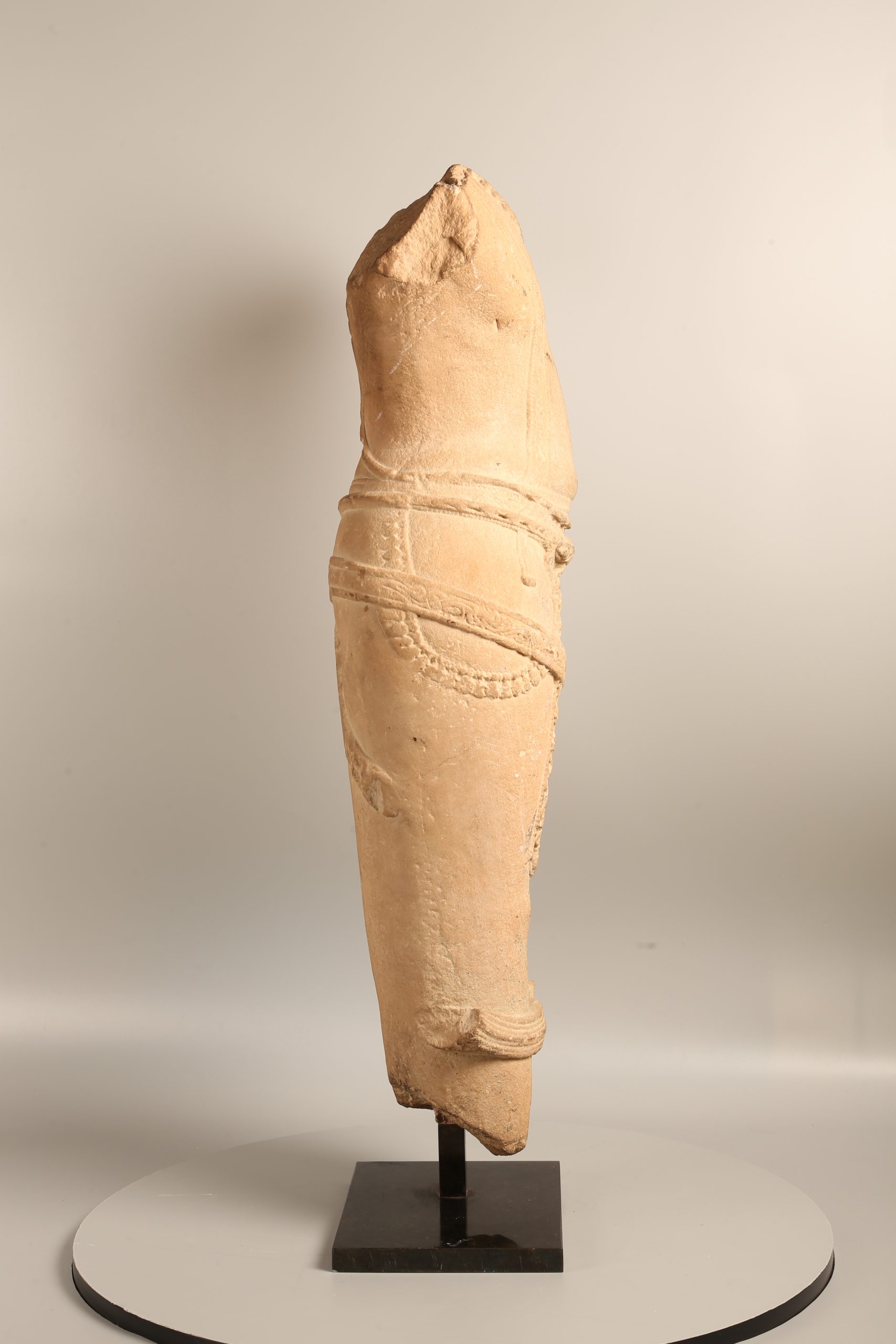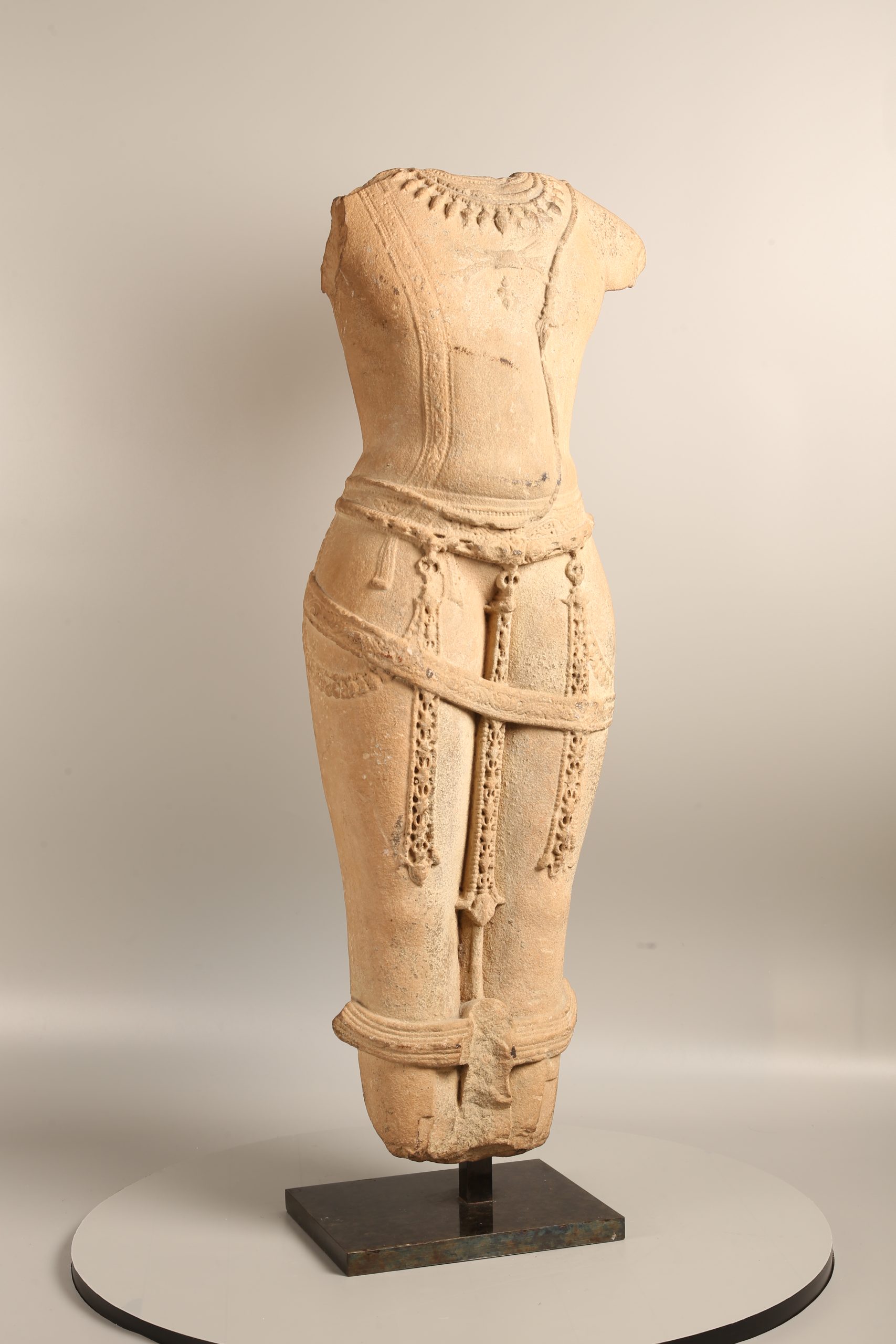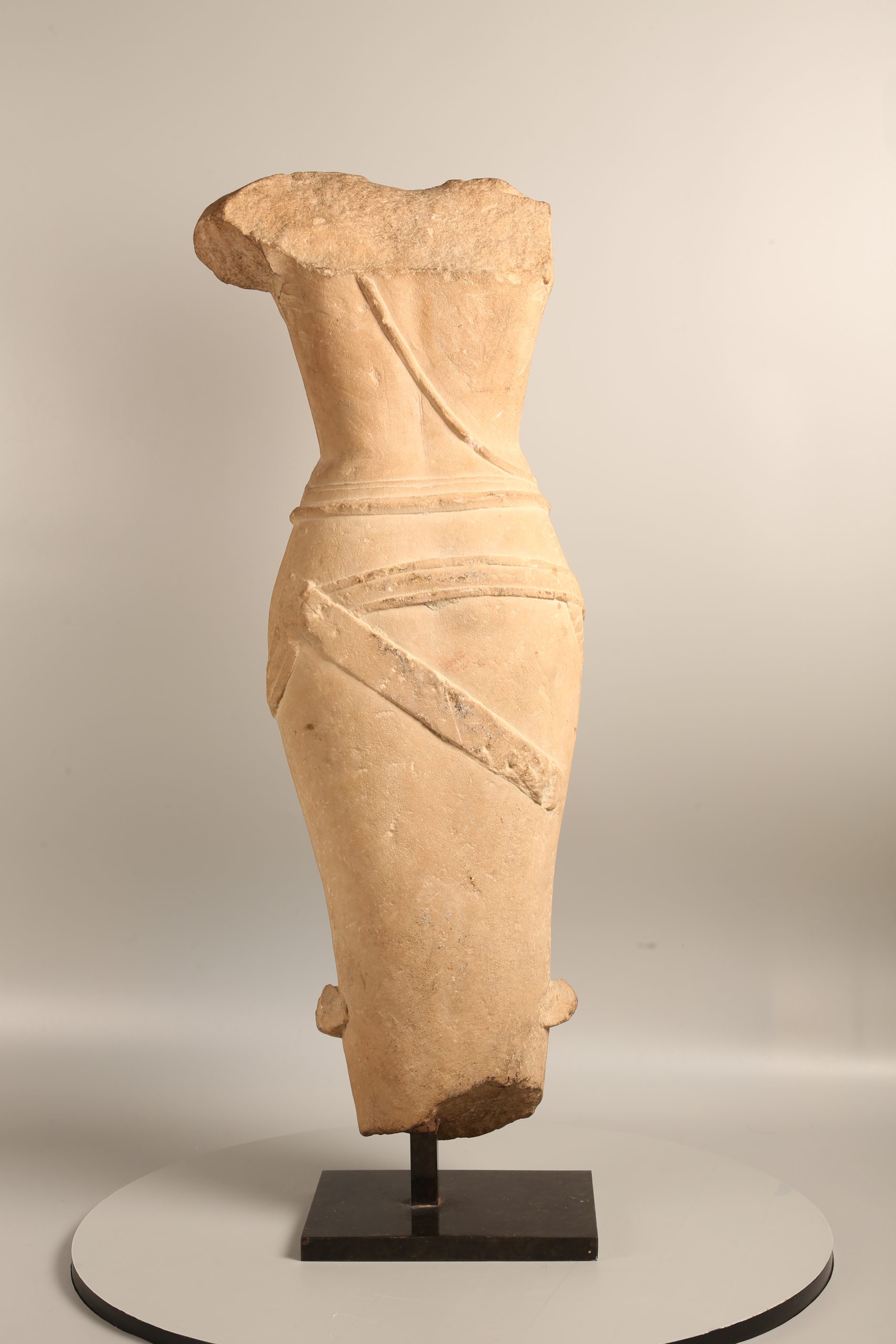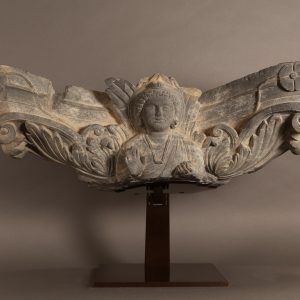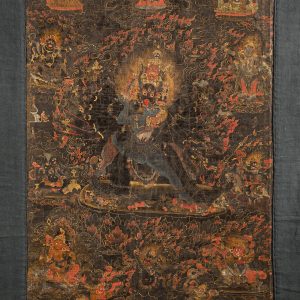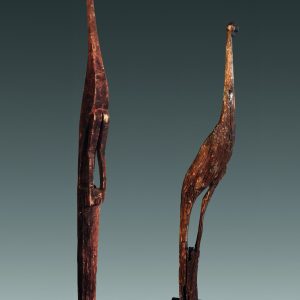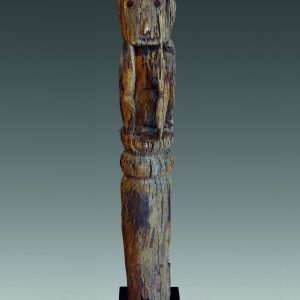Visnu torso
Sandstone
11th-12th century
India
H. 68 cm
Description
This torso, dating from the medieval period, is believed to represent the god Visnu. In fact, despite its fragmentary appearance and the absence of attributes – since his arms are missing, the rich finery he wears tells us about the divine character of the representation.
Moreover, the Brahmanic cord that surrounds his torso is an iconographic element that contributes to the identification of the god, and testifies to his status within the Hindu pantheon. His waist is adorned with a finely carved belt of pendants, while a large necklace of stylised lotuses completes the ensemble. These elements have been carved with meticulousness and rigour, and testify to the richness of the ornaments in India. Indeed, the elements adorning the anthropomorphic sculptures are often inspired by real jewellery worn by the aristocracy. Finally, the trend towards ornamentation is frequently found in the medieval statuary of the subcontinent.
The god is also dressed in a diaphanous garment that rises to the hips, according to the codes of representation in force at the time.
The god stands upright and presents himself to the viewer in a hieratic position. This frontal and noble attitude reflects the supreme image of the god, which often corresponds to the iconography of the god Visnu.
Although it could be the god Surya, whose representations are often similar to these, the absence of boots excludes this hypothesis.
The androgynous plasticity and the supple treatment of the flesh are characteristic of the Indian canon. The god with a full belly and a slim waist is evidence of the tendency to stylize the body in Indian sculpture.
Thus, sobriety of form and a taste for ornamentation characterise this work with an iconography that remains mysterious despite everything.
Provenance : French private collection, 80’s-90’s.

